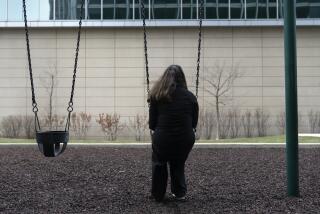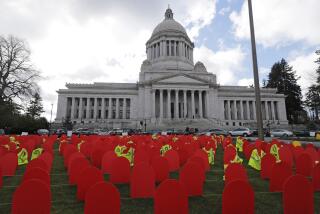Australia Troubled by Teen-Age Suicides
- Share via
SYDNEY, Australia — Matthew Dickson, 15, got off the bus at his usual stop, as he did at the end of every school day. But instead of walking home, he hanged himself from a tree.
No one is sure why, and he did not leave a note to explain.
“He knew how to tie the proper knot,” a friend recalled. He said the boy even bound his own hands so he could not change his mind and save himself.
Dickson’s death in 1990, near the small town of Kyneton in Victoria state, was among a dramatically growing number of suicides by Australian teen-agers.
According to the Bureau of Statistics, 462 people aged 15 to 24 killed themselves in 1991, or 17 per 100,000.
Suicide is the second leading cause of death among the young after road accidents. More than four times as many young males as females take their own lives.
In the United States, the 1991 rate in the same age group was 13.8 per 100,000 and the ratio of male-female suicides was similar, according to U.S. government figures.
The problem is worst in rural Australia, where recession and a trend to corporate farming have attacked family life and left the young with little hope.
Brent Waters, a Sydney psychiatrist, estimates that the suicide rate for males in some rural areas has increased fivefold in less than three decades, while the urban rate remained fairly constant.
“Things are really tough in the bush nowadays,” said Waters, a professor at the University of New South Wales. “This is where the image of Australia’s self-reliant character was forged. Now it is under threat and people feel helpless.”
World prices have declined for wool and wheat, Australia’s main agricultural exports. Many farm families, burdened with large debts, are selling out to agricultural companies or losing their land to banks and other creditors.
Small towns established generations ago to serve the family farms are losing their reason to exist.
There are few jobs and few opportunities for the young. For some, the problems seem insurmountable when combined with the loneliness of country life.
“Some communities are like ghost towns, but with living people,” said Waters, noting that rural areas have few counseling services.
Riaz Hassan, a sociologist at Flinders University in Adelaide, said the suicide rate among young males in both rural and urban Australia has more than doubled in a generation, much as in the United States.
In 1964, the suicide rate among males aged 20 to 24 was 16 per 100,000. By 1990, it had risen to 36. Figures for women of those ages declined in the period from 7.7 in 100,000 to 3.9.
Hassan said the data suggest young Australian men are “emotionally weaker” than women.
“Males tend to focus their roles on their jobs and studies,” he said. “When they fail, they have little to fall back on. Women see themselves as having more in life.”
Many women who do attempt suicide fail because they use “passive” methods, such as drugs or poison, that can be reversed by modern medicine, Hassan said.
Men, by contrast, prefer such violent means as hanging or shooting. Hassan estimated that suicides account for 10% to 30% of fatal single automobile crashes involving young men.
In Kyneton, 35 miles northwest of Melbourne, 20 young people have killed themselves in two years.
More to Read
Sign up for Essential California
The most important California stories and recommendations in your inbox every morning.
You may occasionally receive promotional content from the Los Angeles Times.













